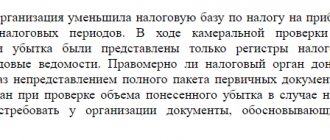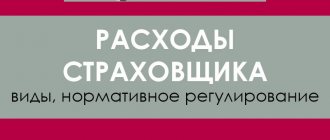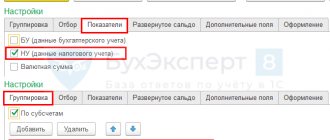Situations with incorrect reflection of kopecks in accounting and reporting can lead to a large number of unfavorable consequences, for example, tax authorities may refuse to accept reports, as well as make a claim for a “penny” amount. Arrears may prevent you from obtaining a certificate of no debt to the budget. If prices and costs in invoices are rounded, auditors may refuse to deduct VAT to the counterparty.
At the same time, there are several options for rounding in accordance with current legislation: it is possible to round amounts to whole rubles, but it is not advisable in primary documents; rounding cannot be done in invoices and when calculating insurance premiums; amounts must be rounded in declarations; this is required by law. In general, it turns out that an accountant needs to remember and always keep these rules in mind, which are easy to get confused about. Let's look at each of the options, drawing up a reminder of when it is possible, impossible and necessary to round pennies to the ruble.
Invoices
In invoices, rounding kopecks to whole rubles is not allowed. Papers are filled out in rubles and kopecks (letter of the Ministry of Finance of Russia dated January 29, 2014 No. 03-02-07/1/3444). The rules for issuing an invoice used in VAT calculations (approved by Decree of the Government of the Russian Federation dated December 26, 2011 No. 1137) in paragraph 3 indicate that all cost indicators are reflected in rubles and kopecks (US dollars and cents, euros and eurocents or in another currency).
If in the documents the organization indicates amounts in kopecks, but in the “primary” form in rubles, the company may encounter situations that will serve as a reason for the tax authority to refuse to deduct input VAT to the buyer. Conclusion: in all documents it is better to reflect the indicators in kopecks!
Since contributions are calculated in rubles and kopecks, and when paid, their amount is rounded up, arrears may arise, for example, 1,500 rubles were accrued. 42 kopecks, and 1500 rubles were paid. Such arrears do not entail liability for the organization, provided that insurance premiums are paid on time...
The buyer may have doubts about the rounding of amounts; discrepancies will be insignificant, but their presence may become a reason for business partners to constantly contact them to make corrections to the documents.
What solution is offered in this case? Add an additional clause to your accounting policy with the following wording: “Employees prepare primary documents and invoices in an accounting program. The program automatically rounds the total cost of goods to two decimal places. When calculating the final cost, the program takes VAT without rounding. In this regard, small discrepancies (up to five kopecks) between the data in the program and the amounts calculated manually are possible.”
An extract from the accounting policy presented to customers will allow you to avoid frequent corrections in primary documents.
GLAVBUKH-INFO
MINISTRY OF FINANCE OF THE RUSSIAN FEDERATIONLETTER dated April 22, 2014 N 03-07-07/18585
In connection with the letter regarding the rounding of the amounts of value added tax presented by the buyer of goods (works, services) and indicated in invoices and primary documents, the Department of Tax and Customs Tariff Policy reports. Clause 2 of Art. 168 of the Tax Code of the Russian Federation (hereinafter referred to as the Code) provides that the amount of value added tax presented by the taxpayer to the buyer of goods (work, services) is calculated for each type of these goods (work, services) as a percentage of prices (tariffs) corresponding to the tax rate sold goods (works, services). In accordance with paragraphs. 11 clause 5 art. 169 of the Code, the invoice issued for the sale of goods (work, services) must indicate the amount of value added tax charged to the buyer of goods (work, services), property rights, determined based on the applicable tax rates. At the same time, according to clause 8 of Art. 169 of the Code, the procedure for filling out an invoice is established by the Government of the Russian Federation. Clause 3 of the Rules for filling out an invoice used in calculations for value added tax, approved by Decree of the Government of the Russian Federation of December 26, 2011 N 1137, stipulates that the cost indicators of the invoice, including in column 8 “Amount of tax presented to the buyer ", indicated in rubles and kopecks (US dollars and cents, euros and eurocents, or in other currencies). As for paragraph 6 of Art. 52 of the Code mentioned in the letter, then according to this paragraph the amount of tax is calculated in full rubles. The tax amount is less than 50 kopecks. is discarded, and the tax amount is 50 kopecks. and more is rounded to the nearest ruble. It must be borne in mind that this article regulates the procedure for calculating the amount of tax payable to the budget for the tax period, which is reflected in the declaration. Taking into account the above, the rule on rounding the tax amount provided for in paragraph 6 of Art. 52 of the Code does not apply to amounts of value added tax presented by sellers to buyers of goods (works, services) and indicated in invoices. With regard to the procedure for rounding the amounts of value added tax indicated in primary documents, we inform you that this issue does not fall within the competence of the Department of Tax and Customs Tariff Policy. This letter does not contain legal norms or general rules specifying regulatory requirements, and is not a regulatory legal act. In accordance with Letter of the Ministry of Finance of Russia dated 08/07/2007 N 03-02-07/2-138, the letter sent is of an informational and explanatory nature on the application of the legislation of the Russian Federation on taxes and fees and does not prevent taxpayers and tax agents from following the norms of tax legislation and fees in an understanding different from the interpretation set out in this letter.
Deputy Director of the Department of Tax and Customs Tariff Policy O.F. TSIBIZOVA
22.04.2014
| Next > |
Cash balance limit
The cash balance limit at the cash desk can be rounded up or down to the full ruble. On June 1, 2014, Bank of Russia Directive No. 3210-U dated March 11, 2014 came into force. This document replaced Bank of Russia Regulation No. 373-P dated October 12, 2011, which is no longer in effect. A legal entity independently determines the cash balance limit in accordance with the appendix to this Directive, based on the nature of the activity, taking into account the volume of receipts or the amount of cash issued. Individual entrepreneurs and small businesses may not set a cash balance limit.
The cash limit at the cash desk can be rounded to whole rubles according to the rules of mathematics. This was confirmed by officials (letter of the Federal Tax Service of Russia dated March 6, 2014 No. ED-4-2/4116). And primary cash documents, for example, expense orders, must be filled out with pennies.
An example of such a difference
For example, let’s take two product positions:
- Product 1 = 641.95
(VAT =
78.55
) - Product 2 = 514.95
(VAT =
97.92
)
Total amount: 1156.90
If we calculate VAT 18% of the amount, we get:
- 1156.90
(VAT =
176.48
)
And if we calculate VAT 18% on each item and add it up, we get:
- 1156.90
(VAT =
176.47
)
The difference is one penny.
Taxes and fees
First of all, it is necessary to separate the concepts: taxes and fees, since regulatory regulation on these issues is established by different legislative acts. In the words of experts, a tax in a real tax mechanism is an irrevocable and urgent form of forced collection from taxpayers in accordance with the tax code of a part of their income in order to satisfy socially necessary needs, and the fee is a targeted contribution aimed at covering state expenses.
Declarations and payment orders
In tax returns and payments, amounts are indicated in whole rubles.
Paragraph 6 of Article 52 of the Tax Code establishes the main rule for calculating taxes: their amount must be reflected in full rubles. The Ministry of Finance in letter dated March 5, 2014 No. 03-07-15/9519 explained that this article of the code regulates the procedure for calculating the amounts of taxes payable to the budget, which are reflected in declarations.
Rounding to whole rubles is not allowed in invoices. The legislation obliges companies to fill out these documents in rubles and kopecks.
The amount is calculated in full rubles: what is less than 50 kopecks is discarded, what is more is rounded up, says the well-known rule, which is enshrined in Article 52 of the Tax Code. However, there are exceptions to this rule that should not be forgotten. In the form of any declaration, you can see that not only the final data is rounded, but also the intermediate figures on each sheet. Therefore, if the amount of tax that the accountant reflects in the declaration, he also indicates in the payment order, there will be no discrepancies.
Insurance premiums
Insurance contributions for compulsory pension, medical and social insurance in case of temporary disability and in connection with maternity are charged for each employee separately (Part 6, Article 15 of the Federal Law of July 24, 2009 No. 212-FZ). In this case, the amount of any of these types of contributions, payable for the organization as a whole, is determined in full rubles (Part 7, Article 15 of Law No. 212-FZ). Thus, an amount of less than 50 kopecks is discarded, and an amount of 50 kopecks or more is rounded up to the full ruble. Thus, the specified insurance contributions to the Pension Fund of the Russian Federation, the Social Insurance Fund and the Federal Compulsory Medical Insurance Fund must be calculated in kopecks, but paid in full rubles. Information on accrued and paid contributions is reflected in the corresponding calculations (Part 9, Article 15 of Law No. 212-FZ).
Since contributions are calculated in rubles and kopecks, and when paid, their amount is rounded up, arrears may arise (for example, 1,500 rubles 42 kopecks were accrued, but 1,500 rubles were paid in accordance with the rounding rules). Please note that such arrears arising as a result of the application of rounding rules do not entail liability for the organization, provided that insurance premiums are transferred on time (letter of the Ministry of Labor of Russia dated February 14, 2013 No. 17-4/264).
In another situation, if the organization does not follow the rounding rules, arrears are also possible (for example, 1500 rubles 76 kopecks were paid instead of 1501 rubles). In these cases, claims by officials and demands for payment of arrears, penalties and fines are possible (Article 22 of Law No. 212-FZ).
As for insurance contributions for compulsory social insurance against industrial accidents and occupational diseases, the procedure for their payment is regulated by Federal Law No. 125-FZ of July 24, 1998. This law does not contain requirements to round up the amounts of contributions when paying. Thus, in contrast to contributions for compulsory pension, medical and social insurance in case of temporary disability and in connection with maternity, contributions for “injuries” are paid in rubles and kopecks.
Insurance premiums can also be paid in whole rubles (clause 7, article 15 of the Federal Law of July 24, 2009 No. 212-FZ). But if amounts are rounded in tax returns, then insurance premiums are not reported in reporting. Indicators in forms RSV-1 PFR and 4-FSS are indicated in rubles and kopecks. Therefore, small discrepancies may arise between the data in the reporting and in the payments.
Tatiana Lesina
, accountant, for the magazine "Calculation"
Guide for the simplified tax system
With this e-book, you will easily understand all the intricacies of the simplified taxation system, competently draw up a balance sheet and financial statements. You will receive the electronic edition immediately after payment to your email. Find out more about the publication >>
If you have a question, ask it here >>
“Salary” taxes—with or without kopecks?
Should or should an accountant not round up “salary” taxes when transferring them to the budget? How to calculate taxes and contributions to extra-budgetary funds for each employee - with or without kopecks? And finally, what to do with small discrepancies in reporting? Discussion of these problems has become one of the most popular topics on the Internet forum on our website.
Accountant's question One forum participant had a seemingly harmless question: is it necessary to round up personal income tax, unified social tax, contributions to the Pension Fund and accident insurance contributions?
In search of an answer, accountants also raised the problem of how to reflect pennies in financial statements. What was recommended on the forum
First of all, the forum participants agreed that personal income tax should be withheld and transferred in full rubles. There is a direct indication in this regard in paragraph 4 of Article 225 of the Tax Code of the Russian Federation. And accident insurance premiums must be paid in pennies, that is, without rounding. After all, the requirements of the Tax Code of the Russian Federation do not apply to them, since they are not included in the structure of the Unified Social Tax. And the FSS of Russia requires that these contributions be calculated without rounding. This conclusion follows from the resolution of the Federal Social Insurance Fund of Russia dated December 22, 2004 No. 111, which approved the payroll sheet 4-FSS of the Russian Federation.
The situation with the unified social tax and contributions to the Pension Fund is more complicated. Social tax The Tax Code of the Russian Federation requires payment in whole rubles. The tax office also requires pension contributions to be transferred in full rubles. Consequently, deviations inevitably arise between the accrued and transferred amounts. And if in the case of pension contributions this does not cause any special problems, then with the unified social tax questions arise. More precisely, with that part of this tax that is credited to the Federal Social Insurance Fund of Russia.
The fact is that the payroll sheet 4-FSS of the Russian Federation is filled out in rubles and kopecks. There is no need to round anything in it. As a result, penny differences inevitably arise between the social tax report and Form 4-FSS of the Russian Federation. According to forum participants, there are two ways to solve this problem. The first is not to round up the “social insurance” UST when paying it to the budget. The second is to round, but up. Then there will never be an underpayment in the payroll for contributions to the Social Insurance Fund. And in this case, the company will not have any problems with submitting the form.
Editor's comment
The forum participants sorted out personal income tax and accident insurance contributions. There are no problems here. Therefore, we will immediately move on to the unified social tax and pension contributions.
How to pay and what to write in reports . Unified social tax must be transferred in full rubles (clause 4 of article 243 of the Tax Code of the Russian Federation). In this case, the amount is less than 50 kopecks. is discarded, and the amount is 50 kopecks. and more is rounded up to 1 ruble. Let us emphasize: just list. The Tax Code of the Russian Federation does not say anything regarding how to calculate tax. Nevertheless, tax authorities also require that reports show the Unified Tax in full rubles.
Contributions to the Pension Fund are also reflected in the reports in whole rubles. And, according to the inspectors, they should be listed in the same way - without pennies.
Such rounding inevitably leads to “penny” problems with that part of the unified social tax that is credited to the Russian Social Insurance Fund. If you transfer it with kopecks (even though the Tax Code of the Russian Federation prescribes rounding, inspectors will not be able to fine you for payment with kopecks), differences will inevitably arise between the accounting and the figures in the UST reports. If, on the contrary, you pay in full rubles, differences will arise between the values indicated in the 4-FSS RF form and in the Unified Social Tax report.
We believe it is important to prevent one thing - underpayment of taxes. Therefore, it is better to adhere to the rules that are established by both the Tax Code of the Russian Federation and the Federal Social Insurance Fund of Russia. That is, list all components of the Unified Social Tax in full rubles, round off indicators in calculations and declarations for Unified Social Tax, and indicate kopecks in Form 4-FSS of the Russian Federation. However, when determining how much social insurance UST you need to pay, we advise you to round it up so that you do not have a penny underpayment in the 4-FSS RF form. That is, from time to time, adhere not to arithmetic rules, but to round up.
For example, the amount of social insurance UST to be accrued is 1000.49 rubles. If you transfer exactly 1000 rubles, as required by the rules of arithmetic, no debts will arise in the Unified Social Tax report, but in the form 4-FSS of the Russian Federation there will be a debt in the amount of 49 kopecks. If you round up and transfer 1001 rubles, then both reports will show an overpayment. It is quite possible that it will be automatically adjusted with further payments.
How to calculate unified social tax and pension contributions in accounting. As you know, UST, pension contributions, as well as other “salary” payments are “personal”. That is, you cannot simply add them to the total amount of income. It is necessary to keep records for each employee. And since the report to the Social Insurance Fund requires kopecks, it is more convenient to keep personalized records in rubles and kopecks, and round up the amount of unified social tax for the organization as a whole and transfer it to the budget in full rubles.
Of course, this method leads to differences between card data and report data. In principle, these minor differences can be left as is. They will not cause any disagreement with the inspector. After all, there will be no difference in the company’s personal account. However, it is ideal to write off deviations at the end of the year to account 91 “Other income and expenses.” Reason - clause 25 of the Regulations on accounting and financial reporting in the Russian Federation (approved by order of the Ministry of Finance of Russia dated July 29, 1998 No. 34n).
Why at the end of the year? The fact is that the amount of advance payments is determined on an accrual basis, offsetting previously paid amounts. Thus, there is no point in writing off variances before the year ends. After all, all the same, all amounts will be finally adjusted only when calculating the Unified Tax at the end of the year.
To be fair, let’s name another option: keep records for each employee and for the organization as a whole in full rubles. Accordingly, the UST amount should also be transferred to the budget in full rubles, without rounding anything.
But this approach will not eliminate deviations either. After all, accounting for accrued UST amounts for each employee in full rubles may differ from the tax amount calculated for the entire company. Meanwhile, Chapter 24 of the Tax Code of the Russian Federation obliges us to calculate the tax base for the enterprise as a whole. In addition, with this method, you will inevitably have to separately calculate with kopecks the amount of accrued payments to the FSS of Russia, filling out form 4-FSS of the Russian Federation.
Nevertheless, the accountant is free to choose the most convenient accounting method for himself - with kopecks or in whole rubles. Neither one nor the other would be a mistake. This is confirmed by letters from the Ministry of Finance of Russia dated March 17, 2008 No. 03-04-06-02/31 and dated May 7, 2008 No. 03-04-06-02/45.






